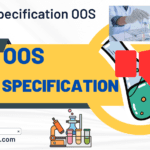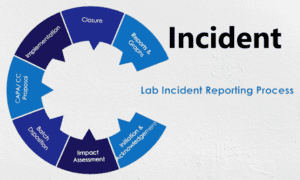Out of Trend (OOT) in the context of the pharmaceutical industry refers to a significant deviation or change observed in the trend or pattern of test results over time. Out-of-Trends analysis is an important aspect of quality control and is conducted to identify potential shifts in product quality or process performance.
Key points about Out of Trend in Pharma
Purpose of OOT Analysis:
Out-of-Trends analysis is performed to detect changes in product quality, process parameters, or analytical performance that may impact the safety, efficacy, or reliability of pharmaceutical products. It helps identify potential issues early and allows for corrective actions to maintain product quality.
Types of OOT:
Out-of-Trends can be categorized into two main types:
(a). Temporal Out-of-Trends: This refers to deviations observed in the trend or pattern of test results over time. It involves monitoring multiple consecutive results to identify any significant changes or shifts.
(b). Comparative Out-of-Trends: This type of Out-of-Trends involves comparing test results of different samples or batches to detect variations that may be indicative of a problem or a change in the manufacturing process.
Out-of-TrendsInvestigation:
When an Out-of-Trends is detected, a thorough investigation is conducted to determine the root cause. This may involve reviewing historical data, evaluating process parameters, assessing analytical methods, examining sample integrity, and considering other relevant factors.
Corrective Actions:
Once the root cause of an Out-of-Trends is identified, appropriate corrective actions are implemented. This may include adjusting manufacturing processes, optimizing analytical methods, improving equipment calibration, conducting additional testing or retesting, or any other necessary measures to address the deviation and ensure product quality.
Regulatory Considerations:
Out-of-Trends incidents are subject to regulatory scrutiny, and pharmaceutical companies are required to maintain proper documentation of Out-of-Trends investigations, actions taken, and any associated impact on product quality or patient safety. Compliance with regulatory guidelines is crucial in managing and reporting Out-of-Trends incidents.
Importance of Trend Analysis:
Trend analysis plays a critical role in identifying Out-of-Trends incidents. By regularly monitoring and analyzing test results over time, it becomes possible to establish meaningful control limits, detect subtle changes, and take proactive measures to prevent potential quality issues before they become critical.
Overall, Out-of-Trend (OOT) analysis is an essential tool in pharmaceutical quality control, helping to ensure product consistency, identify process or product deviations, and maintain the highest standards of safety and efficacy in pharmaceutical manufacturing.
You may also read about Out of Specification
key points of the Out of Trend (OOT) in Pharmaceutical Plants
| Key Points |
|---|
| Out-of-Trend (OOT) Definition. |
| Purpose of Out-of-Trends Analysis. |
| Types of Out-of-Trends. |
| Temporal Out-of-Trends. |
| Comparative Out-of-Trends. |
| Out-of-Trends Investigation Process. |
| Root Cause Analysis. |
| Corrective Actions. |
| Regulatory Considerations. |
| Documentation Requirements. |
| Importance of Trend Analysis. |
| Preventive Measures to Avoid Out-of-Trends. |
Example of the Out-of-Trends
| OOT Incident Report |
|---|
| Date: July 15, 2023 |
|---|
| Product: XYZ Liquid Vial Injectable |
|---|
| Parameter: pH Value |
|---|
| Test Method: USP XXX |
|---|
| Test Results: |
| Batch No. |
| ———————– |
| ABC123 |
| DEF456 |
| GHI789 |
| ———————– |
| Control Limits: |
| Lower Limit |
| Upper Limit |
| ———————- |
| Trend Analysis: |
|---|
| Batch No. |
| ————————————————- |
| ABC123 |
| DEF456 |
| GHI789 |
| ————————————————- |
| Investigation Findings: |
|---|
| Root Cause: Equipment malfunction affecting pH measurement |
| Corrective Actions: Equipment maintenance and calibration |
|---|
| Follow-up: Retesting of affected batches and monitoring of pH values during production |
|---|
This example illustrates an Out-of-Trends incident in a Liquid Vial Injectable Manufacturing Plant, specifically related to the pH value of the XYZ product. The incident report includes the date, product information, test parameter (pH value), test method, and test results for multiple batches. The control limits are defined based on the lower and upper limits. The trend analysis indicates that batch DEF456 and GHI789 are showing an increasing and decreasing trend, respectively, deviating from the control limits and classifying as Out-of-Trend. The investigation findings identify the root cause as equipment malfunction affecting the pH measurement, and corrective actions involve equipment maintenance and calibration. Retesting of affected batches and ongoing monitoring are scheduled as follow-up measures.
Please note that this is a simplified example for illustrative purposes. In an actual Out-of-Trend incident, detailed investigation, documentation, corrective actions, and follow-up processes would be conducted according to the specific pharmaceutical plant’s quality control practices and regulatory requirements.
Frequently Asked Questions:
What is the OOT limit in Pharma?
Answer: The Out-of-Trend (OOT) limit in the pharmaceutical industry is not universally defined and can vary depending on the specific product, test, or regulatory guidelines. The OOT limit is typically established by individual pharmaceutical companies based on their quality control practices and data analysis methods. It is determined by considering factors such as historical data, statistical control limits, product stability, and regulatory requirements. The OOT limit helps in identifying significant trends or patterns in test results that may require further investigation and appropriate actions to ensure product quality and consistency.
What is the definition of OOS and OOT?
Answer: OOS (Out-of-Specification): OOS refers to a result that falls outside the defined acceptance criteria or established specifications for a specific pharmaceutical product or test. It typically relates to a single test result that fails to meet the predetermined specifications. OOS results require investigation to determine the cause and impact on product quality.
OOT (Out-of-Trend): OOT refers to a significant deviation or change observed in the trend or pattern of test results over time. OOT analysis involves monitoring multiple consecutive test results to identify deviations from established trends. OOT incidents are subject to investigation to understand the underlying causes and take appropriate corrective actions.
What is out of trend in Pharma?
Answer: Out-of-Trend (OOT) in the pharmaceutical industry refers to a significant deviation or change observed in the trend or pattern of test results over time. It involves monitoring and analyzing data from repeated testing to identify deviations from the expected or established trends. OOT analysis helps detect shifts or changes in product quality, process parameters, or analytical performance, enabling timely investigations and corrective actions to ensure product consistency and compliance with quality standards.
What is out of trend criteria?
Answer: Out-of-Trend (OOT) criteria in the pharmaceutical industry are established based on the specific product, test, or process under consideration. These criteria typically involve monitoring and analyzing historical data to establish control limits or expected trends for test results. Deviations beyond these established limits or trends are considered out of trend and trigger further investigation to determine the root cause and implement appropriate corrective actions.
What is OOS criteria in Pharma?
Answer: Out-of-Specification (OOS) criteria in the pharmaceutical industry are predetermined specifications or acceptance criteria set for specific pharmaceutical products or tests. These criteria define the acceptable range or limits for various parameters such as purity, potency, dissolution rate, or physical characteristics. If a test result falls outside these predefined specifications, it is considered out of specification, requiring investigation to determine the cause and impact on product quality.
What is Out-of-Trend (OOT) in the context of Pharmaceutical Plants?
Answer: Out-of-Trend (OOT) refers to a significant deviation or change observed in the trend or pattern of test results over time in pharmaceutical plants.
Why is monitoring trends important in pharmaceutical plants?
Answer: Monitoring trends is crucial as it helps identify deviations from expected results, allowing for early detection of potential issues in product quality or process performance.
How is an Out-of-Trend incident identified in pharmaceutical plants?
Answer: Out-of-Trend incidents are identified by comparing test results over a period of time and observing significant deviations from the established trend.
What are the possible causes of an Out-of-Trend incident in pharmaceutical plants?
Answer: Possible causes include changes in manufacturing processes, variations in raw materials, equipment malfunctions, calibration issues, operator error, or environmental factors.
What steps are involved in investigating an Out-of-Trend incident?
Answer: The steps typically include conducting a thorough root cause analysis, reviewing historical data, assessing process parameters, evaluating analytical methods, and examining sample integrity.
How are corrective actions determined in response to an Out-of-Trend incident?
Answer: Corrective actions are determined based on the identified root cause and may involve process adjustments, equipment maintenance, method optimization, additional testing, or retesting.
What documentation is required for an Out-of-Trend incident in pharmaceutical plants?
Answer: Documentation includes a detailed incident report, investigation findings, root cause analysis, corrective actions taken, and any impact on product quality or patient safety.
How are regulatory agencies involved in addressing Out-of-Trend incidents?
Answer: Regulatory agencies require pharmaceutical plants to follow specific guidelines for investigating and reporting Out-of-Trend incidents to ensure compliance with quality standards.
How can preventive measures be implemented to avoid Out-of-Trend incidents?
Answer: Preventive measures include robust quality control processes, regular monitoring of trends, equipment maintenance and calibration, staff training, and adherence to good manufacturing practices.
What is the significance of addressing Out-of-Trend incidents in pharmaceutical plants?
Answer: Addressing Out-of-Trend incidents is crucial for maintaining product quality, ensuring patient safety, meeting regulatory requirements and upholding the reputation of pharmaceutical companies.
You may also read about Microbiology Guidelines




Hello guys! Nice article Home » Flairpharma